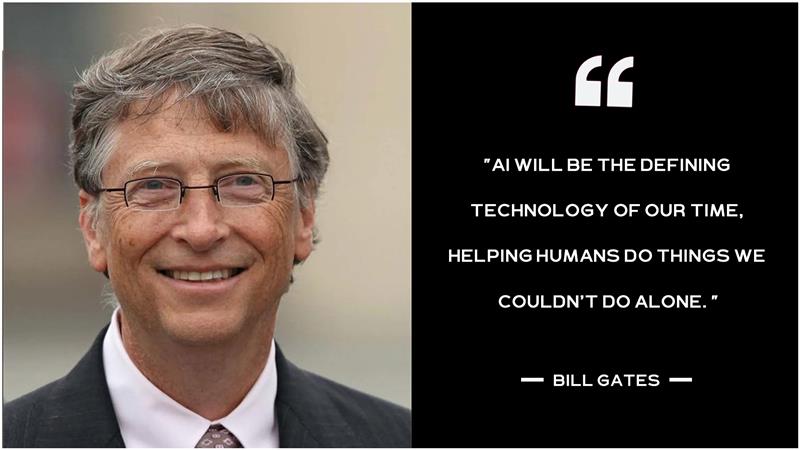Table of Contents
Introduction
Artificial Intelligence (AI) is swiftly changing industries, workplaces, and the way humans interact with technology. By 2025, grasping fundamental AI concepts will be essential for data scientists, innovators, and decision-makers.
The ten AI concepts presented here form the basis of intelligent systems that power everything from chatbots to autonomous vehicles.
Each concept is grounded in decades of research and is continually evolving with new findings in learning, reasoning, and creativity. This guide is designed to elucidate these concepts, helping you comprehend their functionality, importance, and future direction.
Understanding AI Concepts
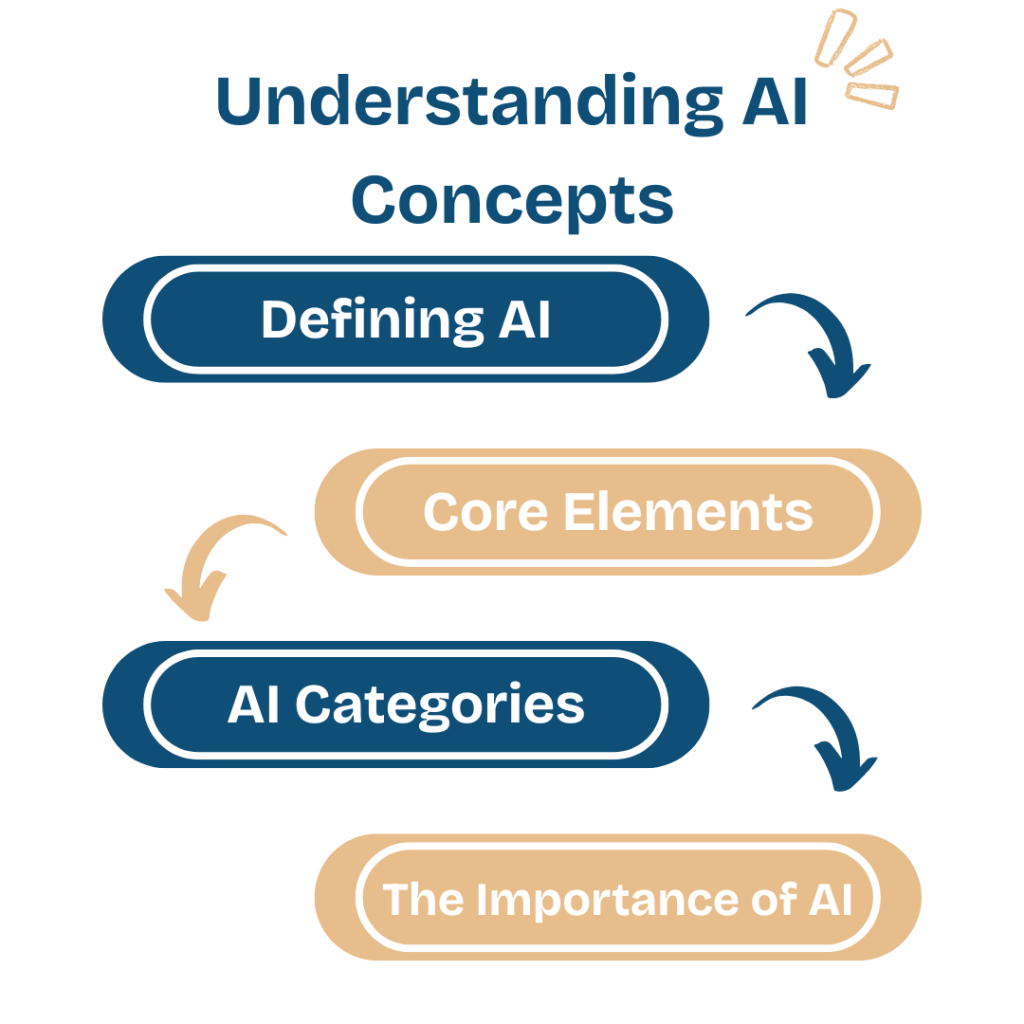
Artificial Intelligence may seem complex, but at its core, it’s built on principles that mimic how humans think, learn, and adapt.
- Defining AI: Artificial Intelligence refers to systems that replicate human cognitive processes, such as reasoning, problem-solving, and learning. It empowers machines to adapt their behavior based on experience rather than rigid programming.
- Core Elements: AI combines data, algorithms, and computational logic to extract insights, predict outcomes, and automate decision-making efficiently. These components form the “brain” of intelligent systems.
- AI Categories: From Narrow AI performing specific tasks to General AI mimicking human cognition, these types define the scope and depth of machine capability.
- The Importance of AI: Understanding AI’s foundations enables individuals and organizations to harness its power responsibly, driving innovation and strategic growth.
This section breaks down the essence of AI, what it is, how it works, and why its evolution matters across industries.
#1. Machine Learning (ML)
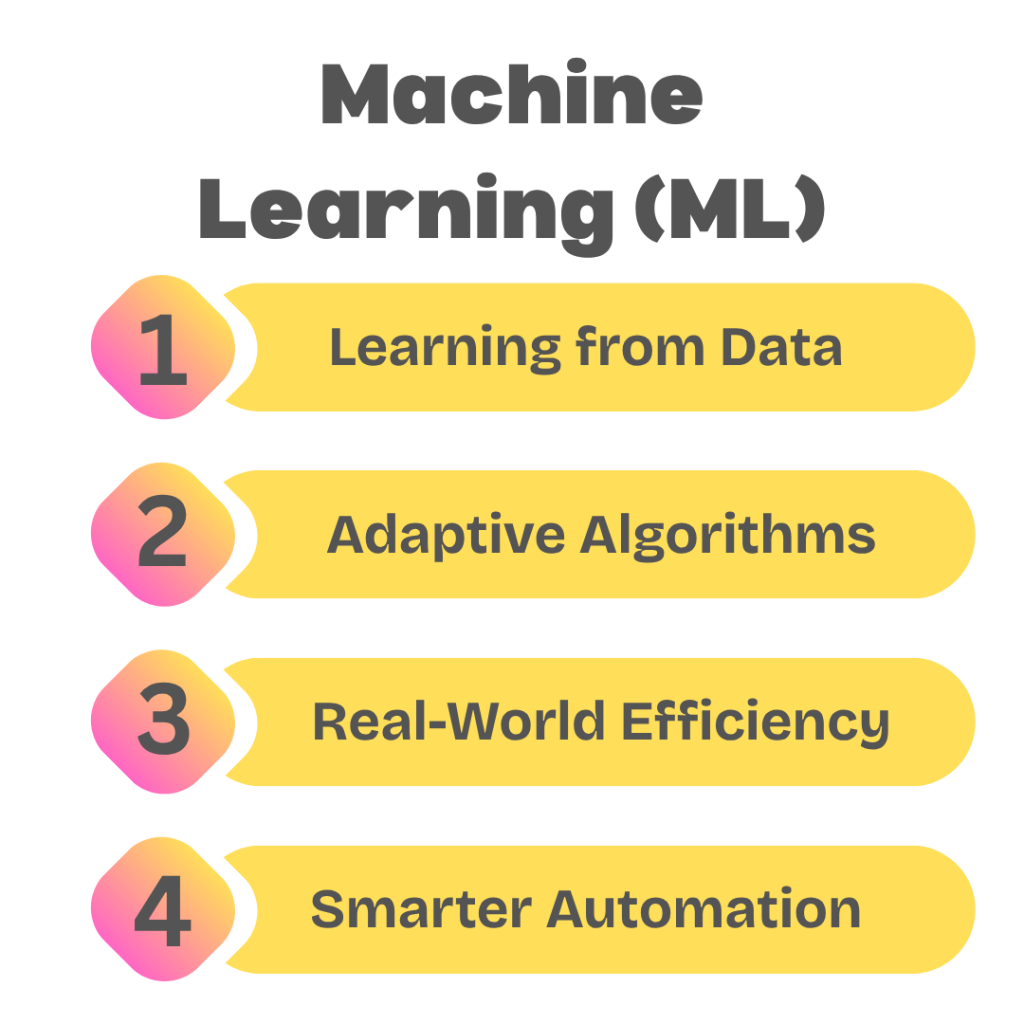
Machine Learning serves as the cornerstone of contemporary AI, enabling systems to learn and enhance through data analysis autonomously.
- Learning from Data: ML systems identify patterns within extensive datasets to forecast results or automate decisions. This learning mechanism minimizes the need for human intervention while boosting accuracy and flexibility.
- Adaptive Algorithms: By consistently encountering new data, ML algorithms adapt and improve themselves. This flexibility guarantees superior performance in ever-changing business or technological settings.
- Real-World Efficiency: From detecting fraud to powering recommendation systems, ML streamlines processes and facilitates more intelligent decision-making across various sectors. It transforms raw data into valuable, actionable insights.
- Smarter Automation: By 2025, machine learning models are set to become more efficient and quicker, capable of operating independently with little oversight—driving the next generation of AI advancements.
It is the key driver behind personalization, forecasting, and automation in the current digital landscape.
#2. Deep Learning (DL)
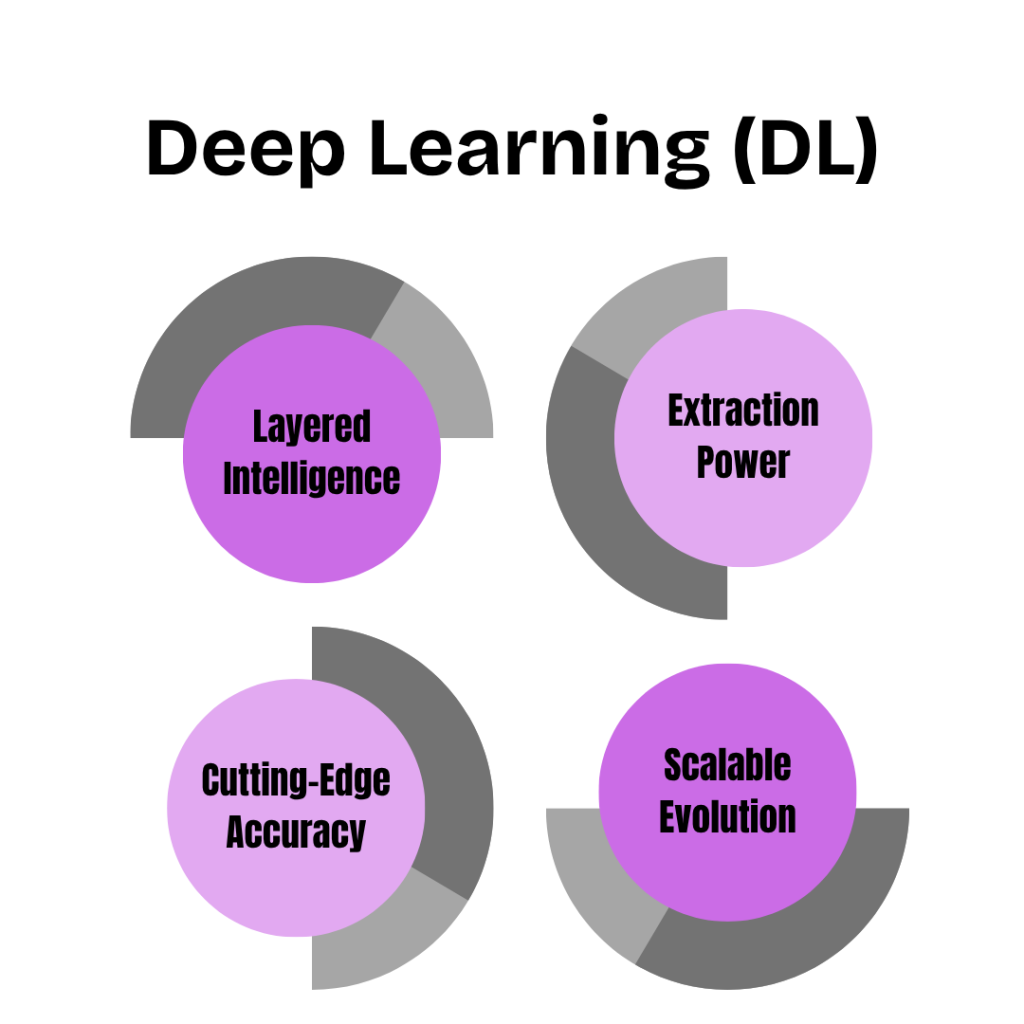
Deep Learning (DL) is a fascinating branch of Machine Learning (ML) that dives into the world of neural networks, utilizing multiple layers to tackle complex data structures.
- Layered Intelligence: DL mirrors the architecture of the human brain, enabling systems to sift through massive, unstructured data sets with ease. It’s particularly adept at spotting intricate patterns that often elude human detection.
- Extraction Power: Thanks to its multiple network layers, DL can automatically pull out relevant features from data, which means there’s no need for tedious manual processing. This efficiency makes it a powerhouse for analyzing images, speech, and text.
- Cutting-Edge Accuracy: DL is known for its impressive accuracy in predictions and classifications, leading to significant advancements in fields like medical imaging, self-driving vehicles, and voice-activated assistants.
- Scalable Evolution: By 2025, the latest DL models are expected to be smaller, faster, and more energy-efficient, signaling a move towards sustainable, real-time intelligence.
This technology empowers machines to take on tasks that mimic human perception, like recognizing faces, voices, and even emotions.
#3. Neural Networks & Transformers
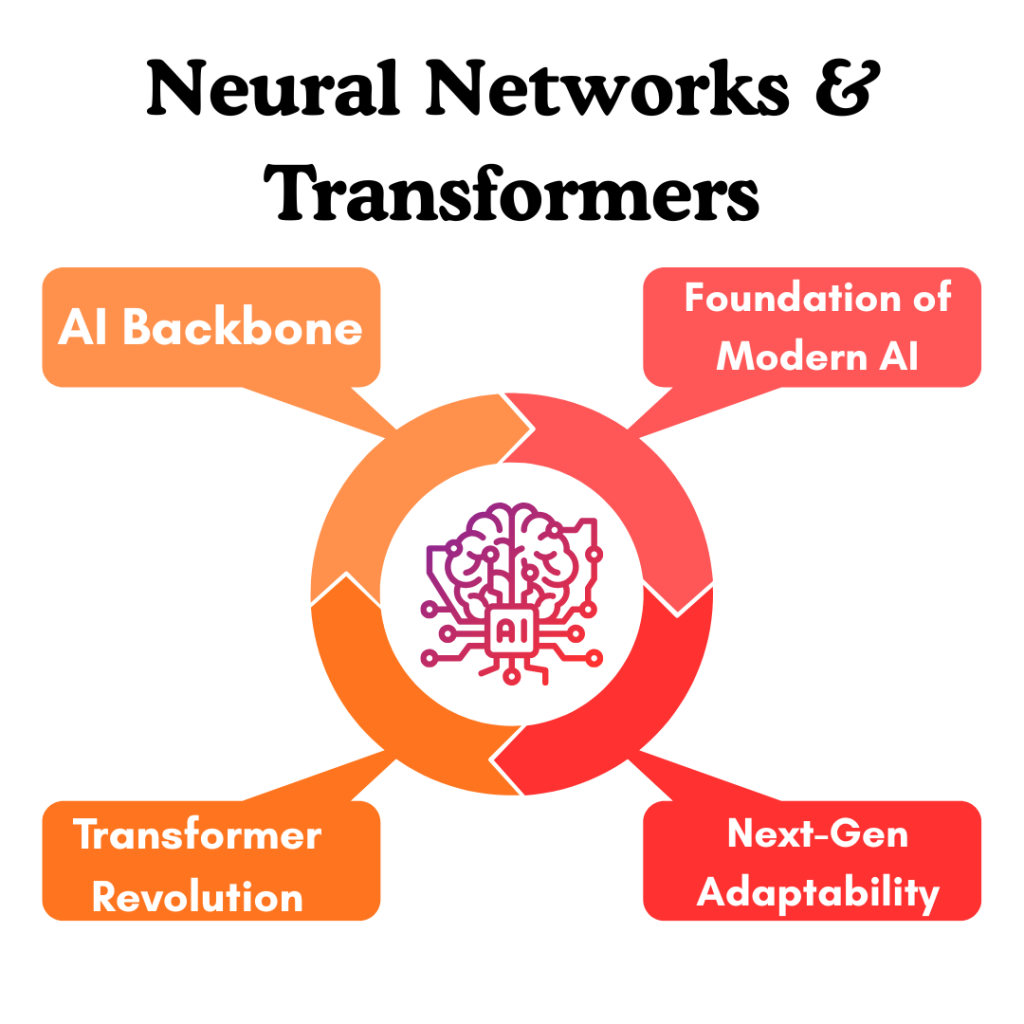
Neural networks are the computational core of AI systems, while Transformers represent the next stage of their evolution.
- AI Backbone: Neural networks mimic how neurons interact in the human brain, allowing data to flow and transform through weighted connections. They’re essential for deep learning’s layered analysis.
- Transformer Revolution: Transformers process sequential information, like language or video, with remarkable speed and context awareness. Their attention mechanisms help models “focus” on relevant data.
- Foundation of Modern AI: Transformers power today’s chatbots, large language models, and AI art tools, enabling machines to comprehend and generate creative or logical outputs.
- Next-Gen Adaptability: Future architectures emphasize efficiency, multimodality, and reasoning—pushing AI closer to human-like understanding and adaptability.
Together, they enable machines to process massive datasets and understand context with unprecedented accuracy.
#4. Natural Language Processing (NLP)
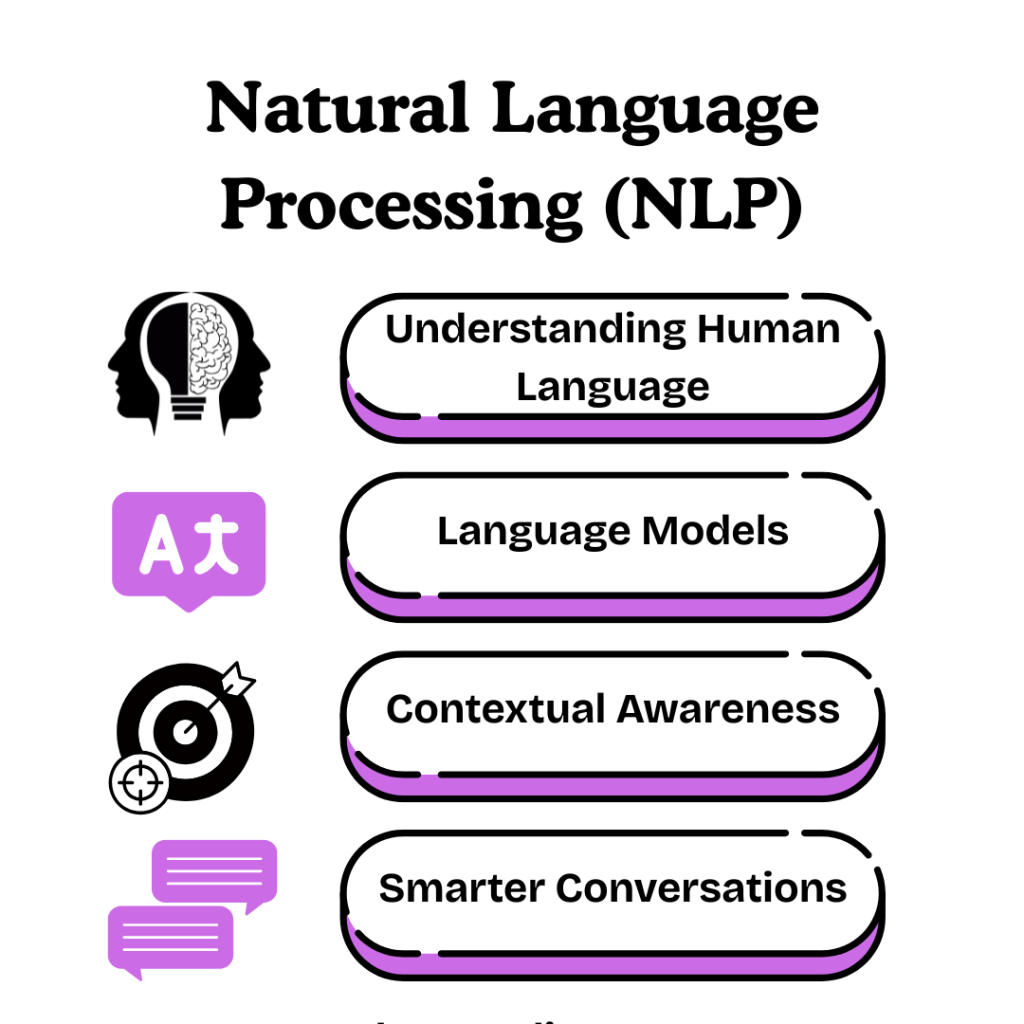
Natural Language Processing bridges the gap between human communication and machine understanding.
- Understanding Human Language: NLP enables machines to analyze syntax, context, and semantics in text and speech, allowing meaningful human-AI interactions.
- Language Models: Applications like translation, summarization, and sentiment analysis rely on NLP to process billions of data points with linguistic precision.
- Contextual Awareness: Modern NLP systems understand nuance, tone, and intent—allowing them to respond naturally, not robotically.
- Smarter Conversations: In 2025, NLP models integrate emotional intelligence, enabling conversations that feel authentic, adaptive, and truly interactive.
It powers conversational AI, virtual assistants, and every system capable of interpreting human language.
#5. Computer Vision
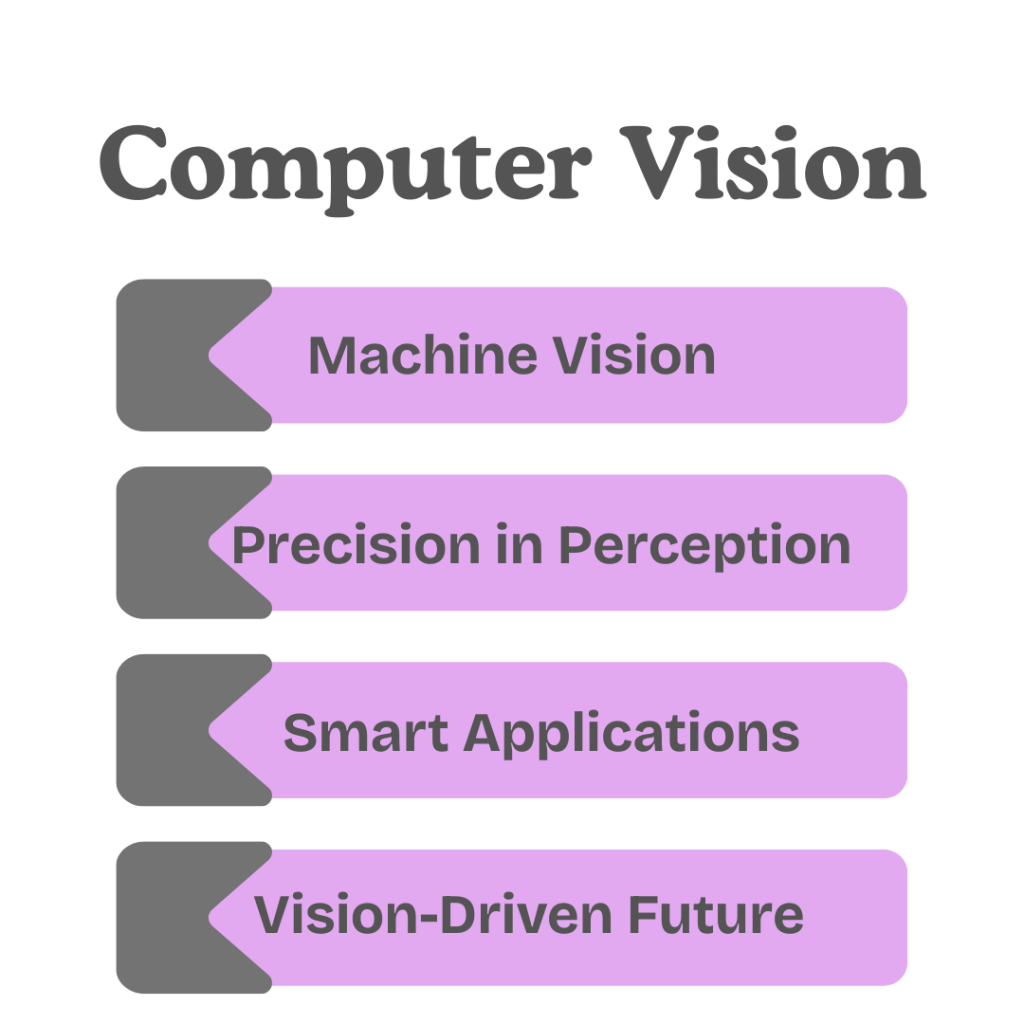
Computer Vision is all about giving machines the ability to interpret and understand visual information.
- Machine Vision: By breaking down pixels, shapes, and patterns, Computer Vision turns images and videos into organized data that machines can understand.
- Precision in Perception: It can identify objects, faces, and environments with almost human-like accuracy, which enhances safety and efficiency in tasks that rely on visual input.
Smart Applications: Various industries leverage Computer Vision for things like tracking inventory, diagnosing medical conditions, and navigating systems.
Vision-Driven Future: Looking ahead to 2025, we can expect to see models that blend visual data with text and sound, leading to a deeper and richer understanding of context.
Whether it’s for security cameras or self-driving cars, it equips AI with the “eyes” to see the world and respond accordingly.
#6. Reinforcement Learning (RL)
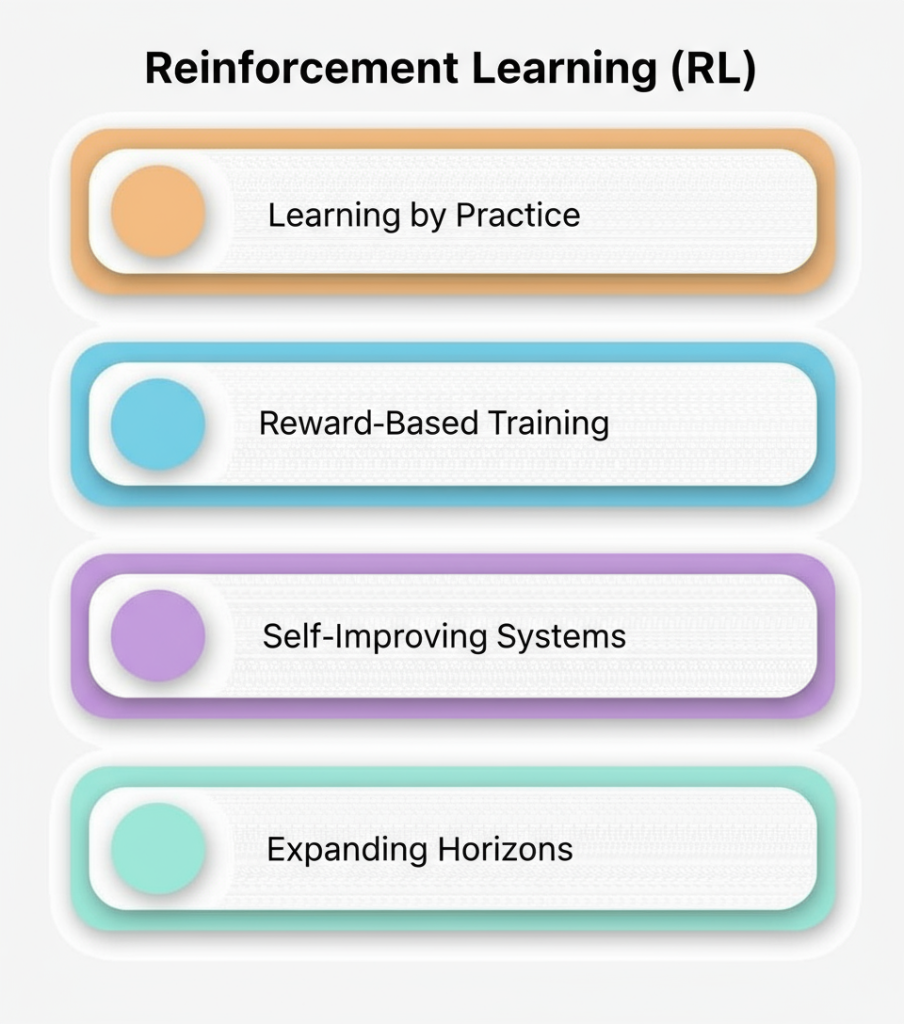
Reinforcement Learning teaches systems to make decisions through trial, error, and reward. It’s the foundation of self-learning AI used in gaming, robotics, and process optimization.
- Learning by Practice: Agents interact with environments, receiving rewards for correct actions—mimicking how humans learn from experience.
- Reward-Based Training: This feedback loop refines strategies, allowing AI to optimize long-term outcomes rather than just instant results.
- Self-Improving Systems: RL-driven systems continuously enhance their decision-making skills, adapting to changing conditions automatically.
- Expanding Horizons: By 2025, RL research focuses on real-world deployment, balancing efficiency, safety, and ethical alignment.
#7. Generative AI
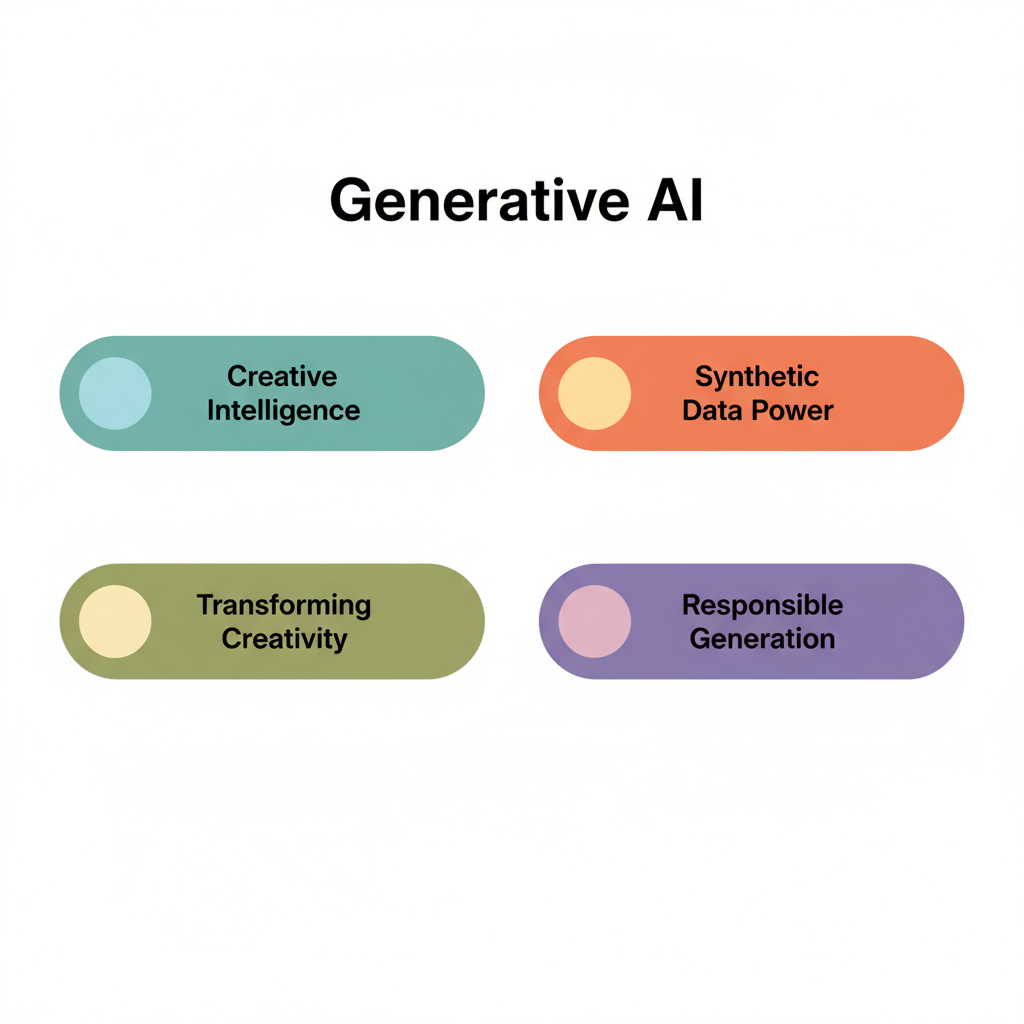
Generative AI enables machines to produce—text, images, code, or music—by utilizing learned data patterns.
- Creative Intelligence: These models use advanced neural architectures to generate new, realistic content that mirrors human creativity.
- Synthetic Data Power: Generative AI produces high-quality synthetic data, supporting safer model training and innovation.
- Transforming Creativity: Artists, developers, and marketers use it to ideate, prototype, and personalize content efficiently.
- Responsible Generation: Ethical frameworks now ensure authenticity, transparency, and originality in generative outputs
It is revolutionizing creativity, design, and data synthesis in various sectors.
#8. Explainable AI (XAI)
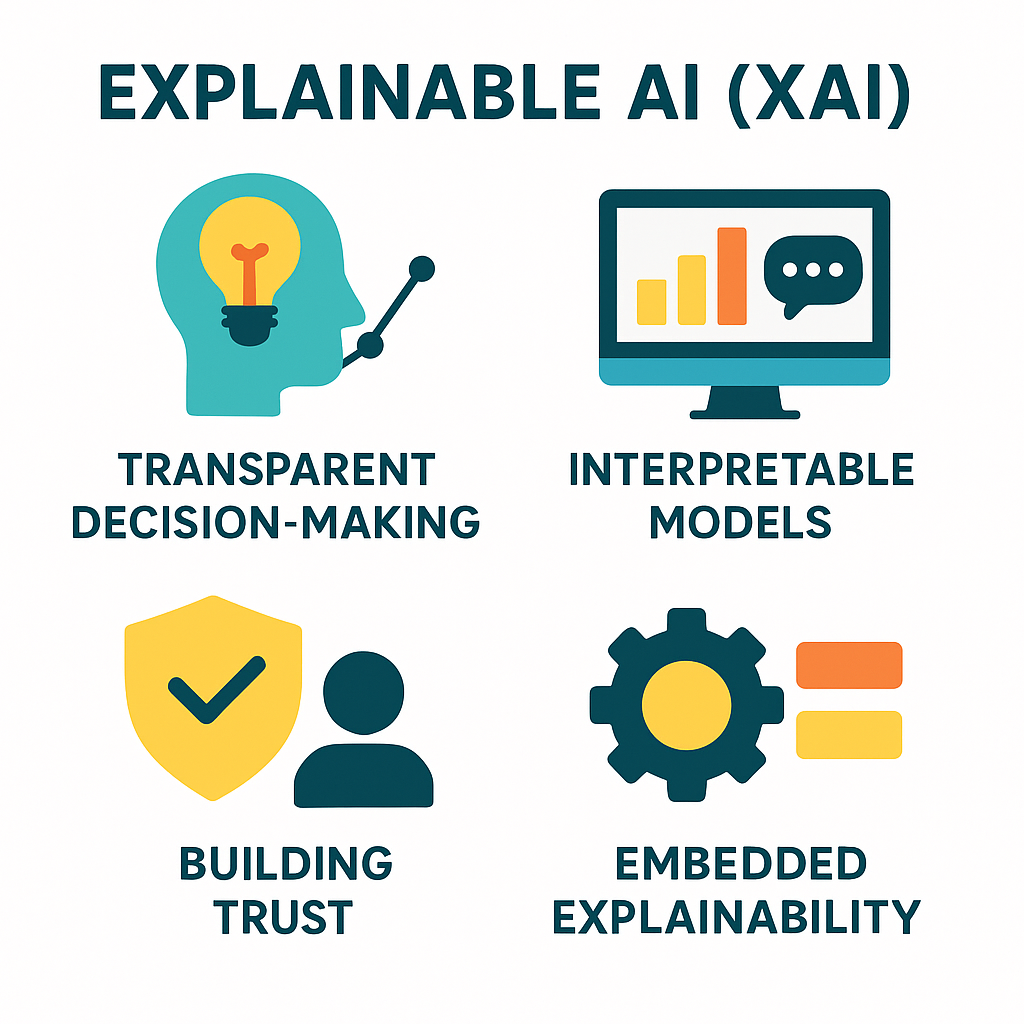
Explainable AI enhances the transparency of black-box models, allowing individuals to comprehend, trust, and verify AI-generated decisions.
- Transparent Decision-Making: XAI elucidates the process by which algorithms generate predictions, fostering user confidence in automated results.
- Interpretable Models: Tools for visualization, heat maps, and feature tracking render the reasoning of models visible and subject to review.
- Building Trust: The importance of explainability is amplified in critical fields such as finance, law, and medicine, where accountability is paramount.
- Embedded Explainability: By 2025, XAI will be incorporated into model architecture, guaranteeing transparency while maintaining performance.
#9. Ethical and Responsible AI
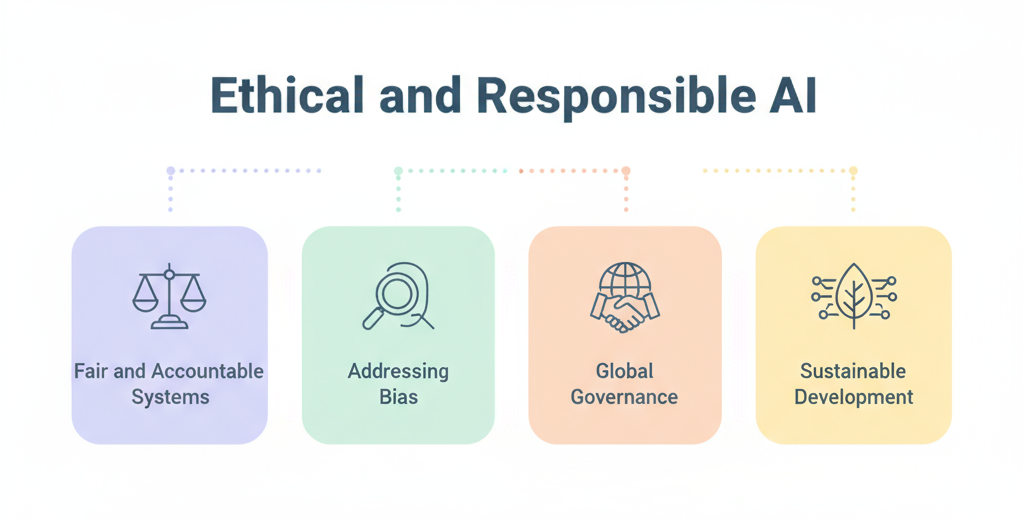
Ethical AI ensures that technological progress aligns with fairness, accountability, and human welfare. As AI becomes more influential, responsibility defines its success.
- Fair and Accountable Systems: Ethical AI combats bias by ensuring models make equitable decisions across all user groups.
- Addressing Bias: Developers emphasize diverse datasets and transparent frameworks to mitigate discriminatory patterns.
- Global Governance: International standards and regulations aim to balance innovation with societal protection.
- Sustainable Development: Ethical AI supports long-term progress by prioritizing privacy, inclusivity, and transparency.
#10. Multimodal AI
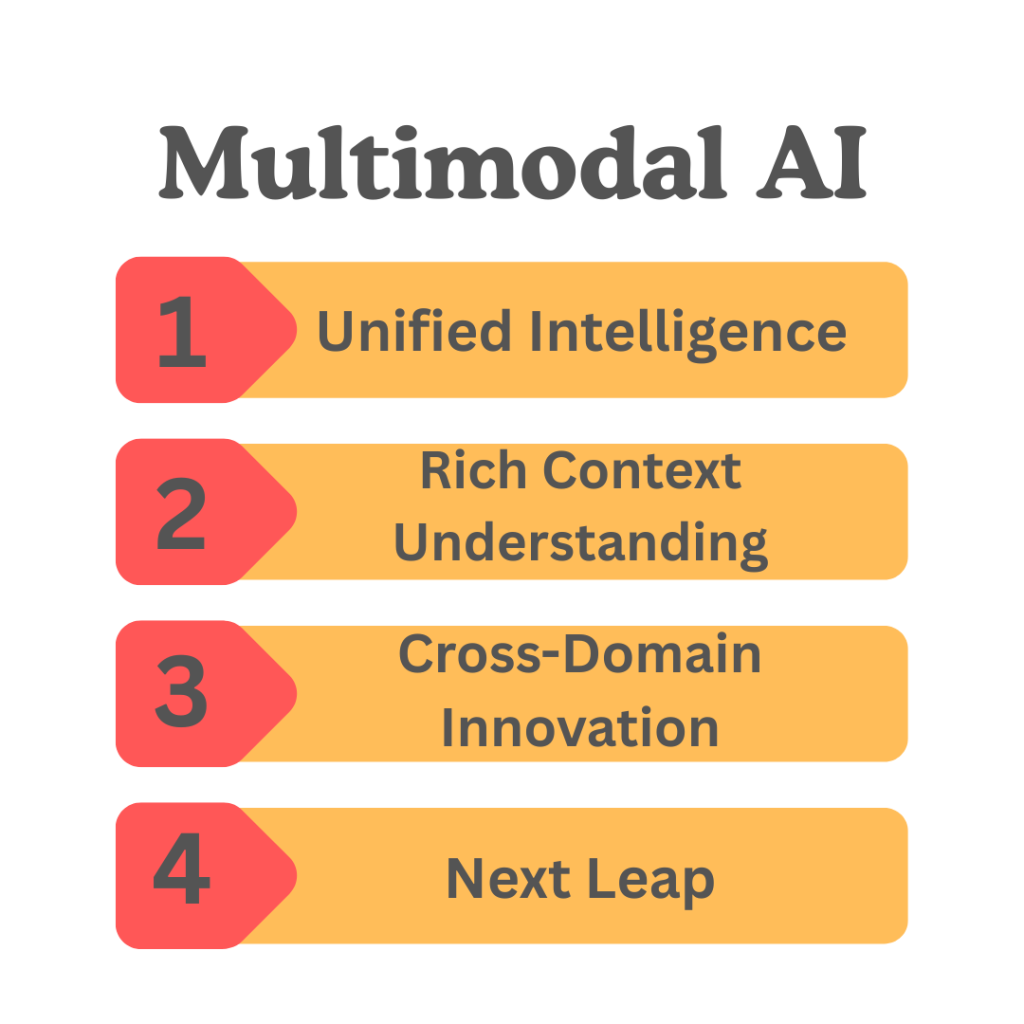
Multimodal AI integrates different types of data—text, visuals, audio, and more—into unified models that perceive and reason like humans.
- Unified Intelligence: By combining diverse inputs, multimodal systems generate a deeper, context-rich understanding.
- Rich Context Understanding: These models connect meanings across formats, enabling coherent multi-sensory processing.
- Cross-Domain Innovation: Applications range from medical diagnosis to interactive assistants that interpret voice and visual cues together.
- Next Leap: 2025 marks the rise of multimodal reasoning, where AI comprehends complex real-world scenarios seamlessly.
Conclusion
Artificial Intelligence has evolved beyond a mere technological advancement; it has become a pivotal force that influences industry operations and human interactions with digital systems. Its influence extends from automation to creative innovation, affecting every aspect of contemporary life.
Grasping essential AI concepts lays the groundwork for effectively navigating this swiftly changing environment with both clarity and assurance. As these technologies become increasingly intelligent, their effects grow more personal and significant.
By understanding these core principles, both individuals and organizations can not only adjust to the changes brought about by AI but also take the lead, turning innovation into sustainable and responsible progress.
Deepak Wadhwani has over 20 years experience in software/wireless technologies. He has worked with Fortune 500 companies including Intuit, ESRI, Qualcomm, Sprint, Verizon, Vodafone, Nortel, Microsoft and Oracle in over 60 countries. Deepak has worked on Internet marketing projects in San Diego, Los Angeles, Orange Country, Denver, Nashville, Kansas City, New York, San Francisco and Huntsville. Deepak has been a founder of technology Startups for one of the first Cityguides, yellow pages online and web based enterprise solutions. He is an internet marketing and technology expert & co-founder for a San Diego Internet marketing company.

